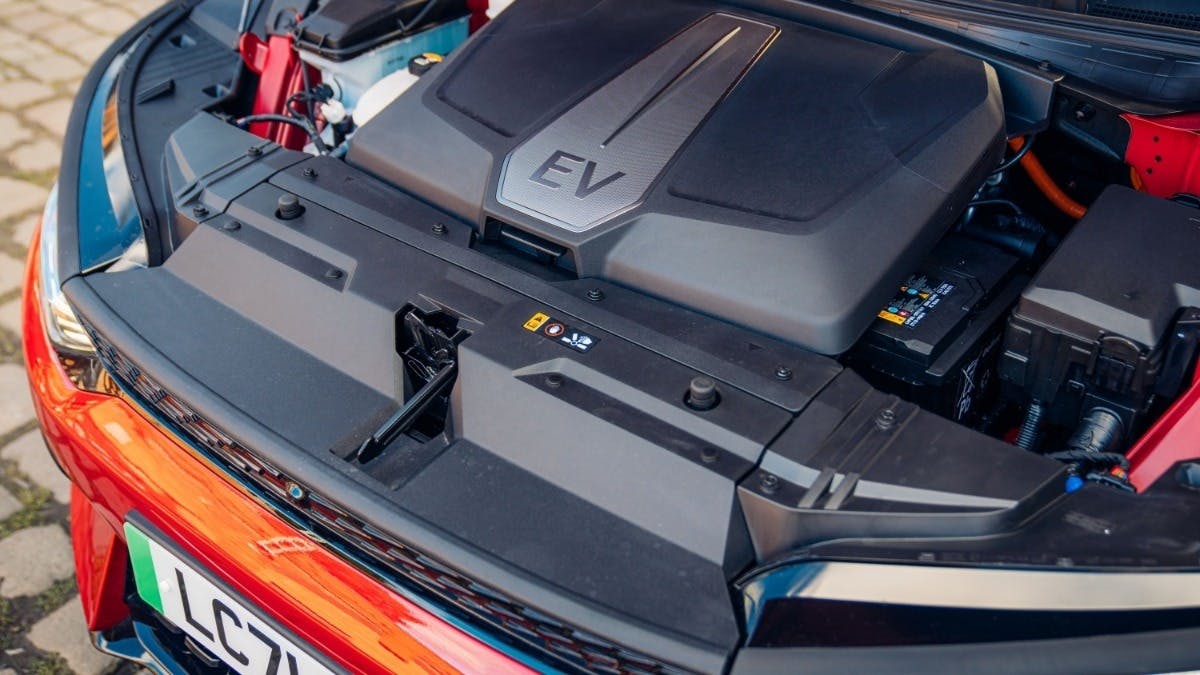How do electric cars work?

-
Find out how electric cars work
Electric car technology is paving the way for greener travel. But, if you’re wondering how an electric car works and the difference between hybrid and pure-electric motoring – read on to find out more.
So, how does an EV work?
Electric cars are actually pretty simple. Two main elements create the power which drives your vehicle.
An EV battery stores electricity, which is used in the electric motor. In turn, the electric motor uses this energy to turn the wheels. The battery stores electricity until needed and provides drivers with a variable range depending on factors such as battery size.
-
How do electric car batteries work?
Electric cars have a large battery pack. This is charged via home charge points or public charging hubs. Batteries differ in size depending on the model and are measured in kilowatt hours (kWh). The larger the battery, the more kWh it has - providing more range.
-
How do electric car motors work?
The technology behind electric motors is complex. But to simplify things, an electric motor uses electricity stored in the battery to create a rotating magnetic field, which is produced in the stator. Inside, the stator is a rotor that moves an axle, which spins the wheels.
Most electric motors have an AC frequency, and an inverter converts the battery’s DC current to power the wheels.
-
How does electric car charging work?
Like anything with a rechargeable battery, EVs must be plugged in to top up the battery. All electric vehicles come with the necessary cables for charging in public or at home and a three-pin plug is also available for slow charging via a standard socket.
-
What is regenerative braking?
All electric vehicles have a regenerative braking system. This is a way of recouping energy typically lost during braking or coasting.
The kinetic energy recovered from braking is then transferred back to the battery and reused when needed. This means your battery recharges slowly in the background, making efficient driving even more important if you want to maximise your range.
-
Explaining electric car driving range

How far a car travels between charges is an important factor to consider when switching to electric. This is where WLTP driving range comes in.
The range of an EV tells the driver how many miles it’s got left before it needs a top-up. Many modern EVs have ranges above 200 miles while some larger batteries offer 300 miles.
It’s common to see the range specified according to WLTP, or Worldwide Harmonised Light Vehicle Test Procedure. In short, this closely represents the real-world range you’ll get out of the vehicle.
WLTP measures efficiency in a range of real-world conditions so the advertised driving ranges of EVs are accurate.
-
Other types of electric powertrains
Alongside pure electric vehicles, hybrids offer a way to enjoy some benefits of transitioning to electric with the backup of a petrol or diesel engine.
-
How do plug-in hybrids work?
Plug-in hybrids are powered by an electric motor, battery and engine. These models usually have around 30-40 miles of pure electric range before the car switches over to petrol or diesel.
This range is ideal for people who take shorter journeys. Plus, you can plug it in to top up the battery.
-
How do full/self-charging hybrids work?
A conventional engine mainly powers full hybrid cars. However, an electric motor provides a pure electric range at slow speeds and short distances.
Moreover, you don’t need to plug this car as it’s recharged while driving and from regenerative braking.
-
How do mild hybrids work?
Mild hybrids have a small electric motor that contributes to powering electric systems in the car and supporting the engine. However, it doesn’t run on all-electric power at any point and can’t be plugged in.
-
The main parts of an electric car

Compared to a conventional car, electric cars have fewer moving parts to maintain and service. The main elements of an EV include the following:
-
Electric motor
This component provides power to the wheels. Most electric motors are AC, but DC/AC is also present in some models.
-
Battery
An EV battery contains lithium-ion cells, which store the electricity used to power an electric car. Batteries are measured in kilowatt hours, and the higher the kWh, the more range you get.
-
Drivetrain
An EV drivetrain is a single-speed transmission that transfers the power from the electric motor to the wheels.
-
Inverter
EV batteries charge up using DC. So the inverter does the job of converting this to AC for the electric motor.
-
Charging port
Every EV has a charging port where the charging cable is inserted when topping up.
-
Electric car charging

There are several ways to recharge an EV:
-
Three-pin wall socket (at home)
All electric cars come with a standard three-pin wall socket for emergency charging. However, this takes many hours if using this option.
-
Wall box (at home)
Charging via a home wall box is the most cost-effective method. Home chargers are usually rated 3.6kW or 7kW, which takes between 8-12 hours for a full charge.
-
Public chargers
Public charge points offer a fast charging option that gives your EV a boost. You have to pay to charge with all networks, with some needing a subscription or account to use them.
Some public chargers are free to use and are found in supermarkets, leisure centres, restaurants and community charge hubs.
-
Public chargers
Public charge points offer a fast charging option that gives your EV a boost. You have to pay to charge with all networks, with some needing a subscription or account to use them.
Some public chargers are free to use and are found in supermarkets, leisure centres, restaurants and community charge hubs.
-
Rapid charging
Rapid chargers are higher-rated points that provide a quick boost on the go. These are typically located in service stations on motorways and major A-roads and charge up to 80% in around 30 minutes.




